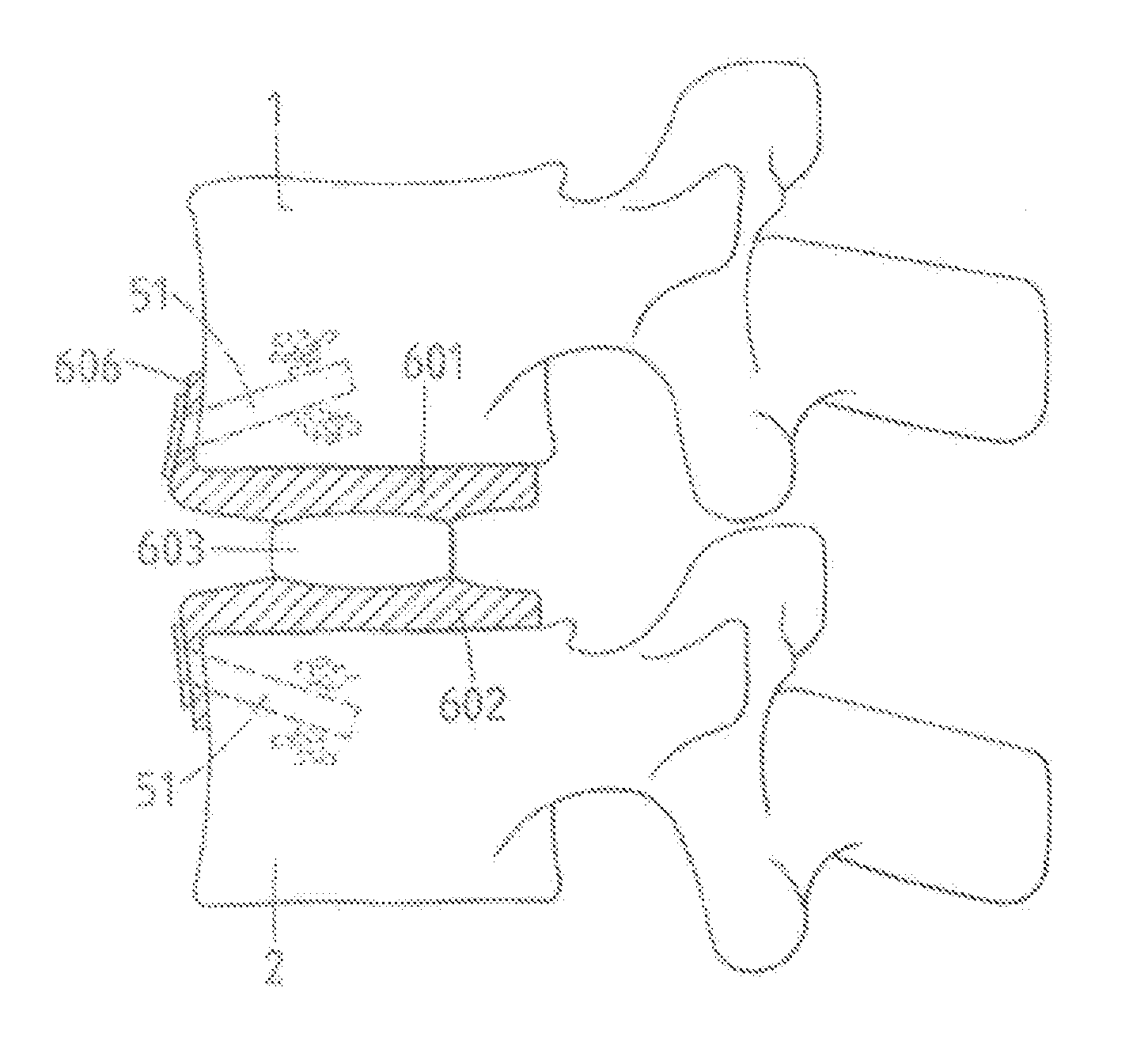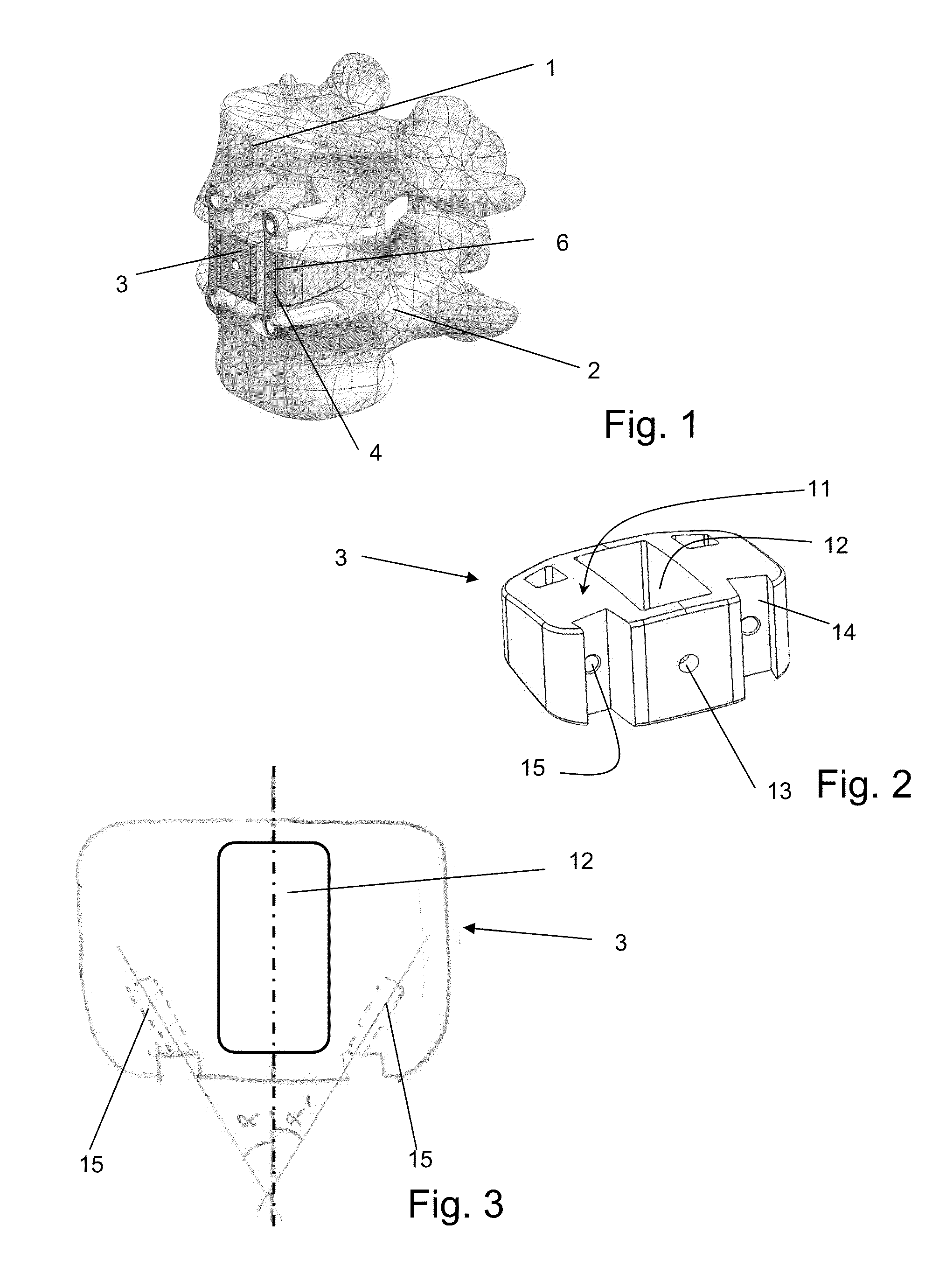Spine stabilization device, and method and kit for its implantation
a stabilizing device and spine technology, applied in the field of spine stabilization devices, can solve the problems of compromising the stability of the vertebral body, weakening the cortical bone of the endplate, and limited access to apply instruments, and achieve good, reliable anchoring
- Summary
- Abstract
- Description
- Claims
- Application Information
AI Technical Summary
Benefits of technology
Problems solved by technology
Method used
Image
Examples
Embodiment Construction
[0173]FIG. 1 depicts an embodiment of a spine stabilization device inserted in a human spine. More concretely, the figure shows an upper vertebra 1 and a lower vertebra 2, between which the intervertebral disc has been at least partly removed. The device comprises an interbody spacer 3 between the vertebral body of the upper vertebra and the lower vertebra. The interbody spacer serves as a distance holder between the upper and the lower vertebral body. The interbody spacer after the surgical insertion between the vertebral bodies is held in place by two fixation devices 4. The fixation devices 4 each comprise two anchors anchoring them in the upper and the lower vertebral body respectively. Further, they each comprise a support portion 6 securing the interbody spacer 3 against movement towards the ventral direction.
[0174]FIGS. 2 and 3 depict the interbody spacer 3 in somewhat more detail. The interbody spacer may be made of any suitable material including PEEK, potentially coated by...
PUM
| Property | Measurement | Unit |
|---|---|---|
| Time | aaaaa | aaaaa |
| Electric energy | aaaaa | aaaaa |
| Angle | aaaaa | aaaaa |
Abstract
Description
Claims
Application Information
 Login to View More
Login to View More - R&D
- Intellectual Property
- Life Sciences
- Materials
- Tech Scout
- Unparalleled Data Quality
- Higher Quality Content
- 60% Fewer Hallucinations
Browse by: Latest US Patents, China's latest patents, Technical Efficacy Thesaurus, Application Domain, Technology Topic, Popular Technical Reports.
© 2025 PatSnap. All rights reserved.Legal|Privacy policy|Modern Slavery Act Transparency Statement|Sitemap|About US| Contact US: help@patsnap.com



